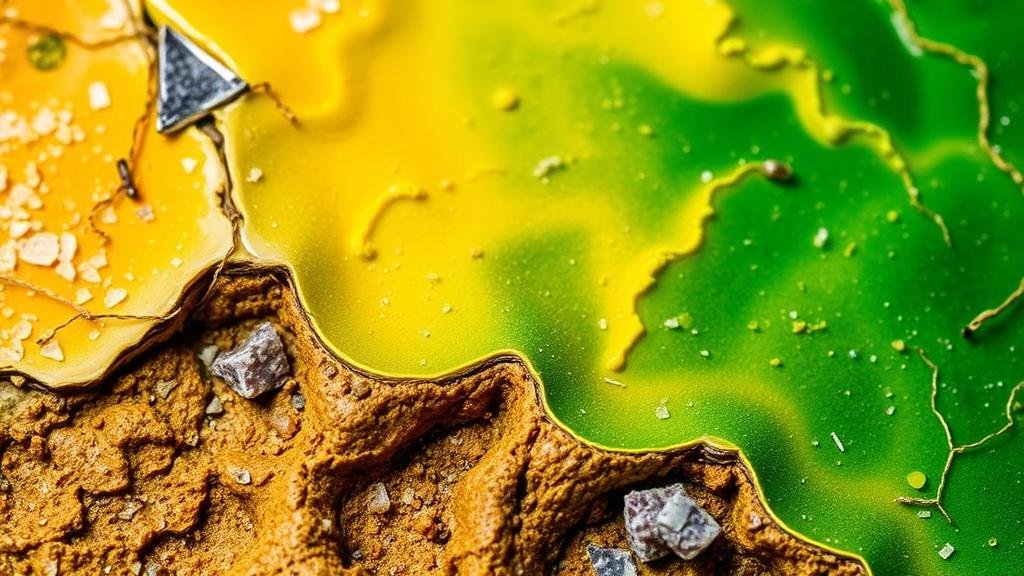Tips for Analyzing the Color and Texture of Sediment for Gold Potential
Tips for Analyzing the Color and Texture of Sediment for Gold Potential
Identifying the potential for gold in sediment is a crucial skill for prospectors and geologists alike. The color and texture of sediment can offer vital clues about the likelihood of finding gold deposits. This article provides practical tips for analyzing sediment and understanding its implications for gold potential.
Understanding the Basics of Sediment Analysis
Sediment analysis involves evaluating physical characteristics such as color, texture, and composition. In the context of gold prospecting, specific traits in sediment can indicate the proximity of gold deposits. Successful sediment analysis requires both observational skills and an understanding of sedimentary processes.
The Importance of Color
Color is one of the first and most apparent characteristics to assess. Sedimentary color can indicate mineral content and help locate potential gold sources. Understanding color patterns can assist in identifying the geological environment from which the sediment originated.
- Golden Hues: Sediment that shows yellow or golden flecks may suggest the presence of gold particles. This color is often more visible in riverbeds, particularly following rainfall when sediment is exposed.
- Oxidation Signs: Darker or reddish hues can indicate iron oxidation, which may be associated with gold deposits. Iron-rich sediments often occur near brass-rich deposits.
Analyzing Texture
The texture of sediment provides insights into the sediments environment and potential for gold. Key texture characteristics to evaluate include grain size, shape, and sorting.
- Grain Size: Fine-grained sediments, such as silt and clay, are generally less favorable for gold deposits compared to coarse-grained deposits like gravel or sand, which can trap heavier particles.
- Shape: Well-rounded grains suggest longer transport distances, often linked to more mature sediments where gold may have been eroded and concentrated.
- Sorting: Well-sorted sediment can indicate the mechanical processes of sediment transport that typically favor the accumulation of heavier minerals, including gold.
Field Testing Techniques
After analyzing color and texture, field testing is crucial to validate observations. Several techniques can assist in determining sediments gold potential:
- Panning: Using a gold pan to separate sediment can validate color observations. Gold is dense and will settle at the bottom when the pan is shaken, allowing for easy retrieval.
- Magnet Testing: If sediments contain magnetite or other ferrous materials, this can influence gold presence. Use magnets to identify iron-rich particles that may indicate geological processes promoting gold accumulation.
Case Studies and Practical Applications
Numerous historical cases illustrate the importance of sediment characteristics in gold prospecting:
- California Gold Rush: Streams with coarse, well-rounded gravel often yielded high amounts of gold, tracing back to glaciated terrains. Sediment with visible yellow stains led many prospectors to lucrative finds.
- Alaskas Klondike: This region witnessed significant gold finds in river sediments, where dark oxidized gravel juxtaposed against lighter sands indicated areas where erosional processes concentrated gold.
Conclusion and Actionable Takeaways
When assessing sediment for gold potential, a systematic approach to analyzing color and texture is essential. Remember these key takeaways:
- Pay close attention to sediment color for visible indications of gold.
- Evaluate sediment texture–grain size, shape, and sorting– to understand potential accumulation processes.
- Conduct field tests like panning and magnet testing to confirm your findings.
By implementing these strategies, prospectors can enhance their ability to analyze sediment effectively, leading to more informed and potentially successful gold prospecting endeavors.



